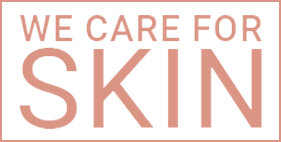One of the most common misconceptions in dermatology and skin care is about acne and pimples being similar. As a result, they are often referred to interchangeably. Despite some overlap in their manifestations, these terms have their differences. Knowing which of these is the condition itself and which is a symptom of the condition can mean a lot in treating it. Having a good understanding of the difference between acne and pimples can guide you better on how to manage either of them.
Since the line between acne and pimples is kind of unclear, for most people, a single raised bump and a cluster of papules and pustules are one and the same, and it is understandable why that is. A pimple can be confused as an acne and vice versa, especially if their pathophysiology is not understood well.
Acne vs Pimple
The key difference between acne and pimples is knowing that acne is a condition itself and pimples are one of its symptoms.
Pimples is a colloquial term for comedones. Pimples can be raised bumps with slight redness and tenderness. They can also be closed (whiteheads) or open comedones (blackheads). The difference of whiteheads and blackheads are further discussed below.
Acne, on the other hand, is a chronic skin condition that is more than just pimples on the skin. Signs include a large number of pimples with deeper inflammation and more severe lesions, clustering around areas of the face, chest, back, and shoulders.
A deeper look into acne
Acne or acne vulgaris, is a common skin condition that occurs when hair follicles and their associated sebaceous glands (also known as pilosebaceous units) are clogged with sebum or facial oil.
When dead skin cells are trapped inside along with sebum, this causes blackheads or whiteheads to develop. In cases where these get inflamed, they turn into pimples. Bacterial colonization with Propionibacterium acnes or P. acnes can follow which in turn can also trigger inflammation via interleukins-12 and -8, as well as TNF or tumor necrosis factor. Acne can present as blackheads, whiteheads, papules, pustules, nodules, and cysts, depending on its severity.
Genetics is one of the major risk factors for developing acne since the number, size, and activity of sebaceous glands are found to be hereditary. Other factors can include use of certain cosmetic products, adverse drug effects, physical friction, and hormonal imbalance.
Most teens are at risk of developing acne because their bodies make more androgen hormones during puberty and will naturally die down by early twenties, which is when acne usually goes away on its own. Some teens may not experience acne, and it is believed that the immune system and genetics play a role in this.
What are the symptoms of acne?
Acne causes multiple types of lesions on the skin, and it’s also important to know how to distinguish them.
Blackheads are non-inflammatory and a milder symptom of acne. These are clogged pores in the skin which are caused by oil build up. Blackheads are “open” which causes the debris inside the follicle to react with the oxygen in the air, thus resulting in a darker head.
Whiteheads are also non-inflammatory and are a milder symptom of acne, similar to blackheads. The only difference between the two is that whiteheads are “closed” with white or yellowish heads. Both whiteheads and blackheads are considered “pimples”
Papules are a moderate type of acne symptom, usually accompanied by a more noticeable acne pimple. Papules are small red or pink bumps on the skin and are usually mildly tender.
Pustules are also similar to papules. These are moderate types of acne symptoms, raised bumps with yellowish pus. Pustules are also mildly tender and can also appear with red or pink circles around the head.
Nodules are the severe types of inflammatory acne. These are large and painful lumps deep under the skin’s surface. Nodular acne usually requires treatment from a healthcare provider. If left untreated, it may lead to scarring.
Cysts are also a severe type of inflammatory acne. These are large and painful pus-filled lumps that form under the skin. Cystic acne can also harbor bacteria into the pores, causing swelling. Cystic acne can also lead to scarring.
Severity of acne
The medications used for treating acne are also based on its severity. Dermatologists may prescribe medication based on how severe the acne has progressed, and how it is responding to previous or current medications.
-
Mild acne symptoms include open and closed comedones, such as blackheads and whiteheads with several inflamed lesions.
-
Mild/Moderate acne symptoms appear with occasional inflamed papules and pustules.
-
Moderate acne symptoms present as many inflamed papules and pustules.
-
Severe acne symptoms are with many comedones, inflamed lesions, and nodules and cysts. In this case, symptoms are appearing frequently.
Acne scars
Aside from diminished self-confidence, acne can also lead to scarring. These scars can sometimes appear flat and unnoticeable, while some may be visible and indented. These scars are also classified into types.
Atrophic scars are indented scars that did not have enough connective tissue while in the healing process. Hypertrophic scars occur when an acne wound is healing with too much connective tissue resulting in raised scars. Lastly, keloid scars form as a result of overgrowth of connective tissue and are larger than the lesion area.
Treatment
Often, acne is treated using over the counter products, like cleansers, facial toners, and other topical treatments. Some people are lucky enough to have their acne resolved using only these products, but some people may need consultation from dermatologists and undergo more intensive treatment to achieve results. Prescriptions may depend on the severity of the acne condition.
Recommended over-the-counter medications commonly include products with ingredients such as retinol, benzoyl peroxide, and salicylic acid. Oral medications are usually used if acne is not responding to topical treatments. Prescription oral medications may include antiandrogen agents (off-label use of spironolactone), antibiotics (tetracycline, doxycycline, minocycline, erythromycin, azithromycin, and cephalexin), and also isotretinoin.
Isotretinoin is a popular choice for oral medication due to its high efficacy and accessibility. This, however, comes with a warning since it should never be used by pregnant and breastfeeding women, and those who are planning to conceive.
One brand of isotretinoin available in the Philippines is Acnetrex. Acnetrex is used to treat moderate and severe types of acne that have not responded to topical medications. This medication is administered by a doctor dependent on the needed dose. The dosage varies from one patient to another and is also depending on the patient’s weight. The usual dose is 0.5 mg per kilogram of body weight, taken per day. The drug is usually taken twice daily, until the determined length of time of using the drug.
How Acnetrex works is that it decreases the production of sebum or facial oil by reducing the size of sebaceous glands and inhibiting its activity. Studies have shown that isotretinoin has anti-keratinizing and anti-inflammatory actions, and a complete course of isotretinoin medication can prevent acne from coming back.
Other treatment options
In addition, patients can opt to choose or combine their current medication with other clinical treatments. Some therapies include:
Acne Surgery/Laser: This treatment uses high-intensity pulse lights that kill bacteria that cause acne, reduce inflammation, and help the skin with rejuvenation.
Chemical Peel: This treatment works by removing and exfoliating the skin to reveal fresher and healthier skin. This treatment is also great for skin rejuvenation and is more effective than physical exfoliators, such as topical scrubs.
To reiterate, the only difference between acne and pimples is that acne is a chronic skin condition, and pimples are one of its symptoms or manifestations. And whether you are experiencing a single or a cluster of pimples, it is important to know what’s best for your skin and choosing the right products to use for it goes a long way.
References
-
Mahto, A. (2017). Acne vulgaris. Medicine, 45(6), 386-389. https://doi.org/10.1016/j.mpmed.2017.03.003
-
Institute for Quality and Efficiency in Health Care [IQWiG]. (2019). Acne: Overview. Retrieved from https://www.ncbi.nlm.nih.gov/books/NBK279211/
-
National Institute of Arthritis and Musculoskeletal and Skin Diseases [NIAMS]. Acne. Retrieved from https://www.niams.nih.gov/health-topics/acne
-
Frothingham, S. (2019). What’s the Difference Between Acne and Pimples? Retrieved from https://www.healthline.com/health/difference-between-acne-and-pimples
-
MIMS Philippines. Acnetrex. Retrieved from https://www.mims.com/philippines/drug/info/acnetrex


